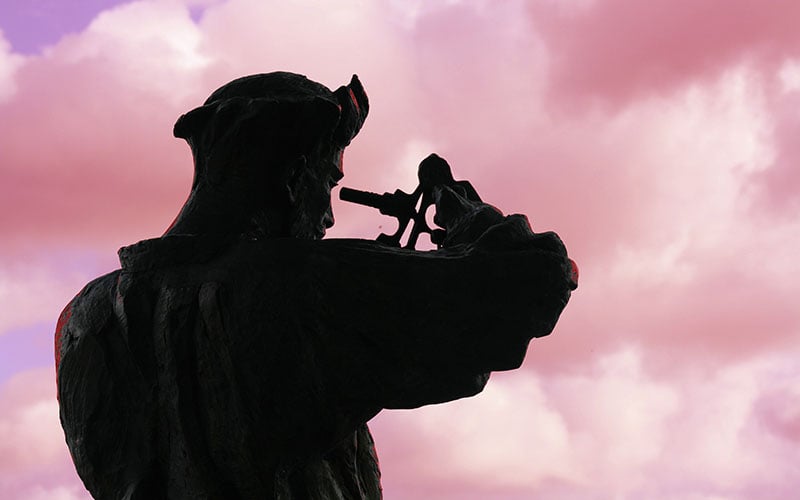SANTA FE, N.M. – For decades, actors wearing Spanish armor and colorful costumes would parade into the city’s plaza on horseback to perform the Entrada, a reimagined historical moment.
“Pueblo Indians of New Mexico, I have been sent here by his majesty the king with full pardon for all of you,” an actor portraying Don Diego de Vargas would proclaim. “The only condition being is that you return to Christian religion.”
The actors depicted Spain’s peaceful reclamation of Santa Fe 12 years after the Pueblo Revolt of 1680. The Entrada traditionally was performed as part of the city’s annual Fiesta de Santa Fe.
Historians say that day in 1692 may have been without bloodshed, but de Vargas, who was governor of New Spain, and his men went on to murder hundreds of Pueblo people. In recent years, the reenactment has become a symbol of colonialism to Native Americans and a painful reminder of the American Southwest’s bloody past.
Five-hundred years ago in November, a group of explorers who came to be known as the conquistadors led the Spanish Crown’s invasion of Mexico. Today, their name and legacy – and whether they should be celebrated – are heatedly debated.
Elena Ortiz was in kindergarten when her father found out her school was performing the reenactment. Her parents told the principal they did not want their daughter to participate in this “fiesta.”
“It wasn’t until I was in high school I realized what they were essentially celebrating when they came to the schools was the conquest, the subjugation and the genocide of my own people,” said Ortiz, a spokeswoman for the Red Nation, a Native American advocacy group.
Santa Fe Public Schools officials have said they will limit when the reenactors are allowed to visit. Ortiz, who now has a daughter of her own in school, said they aren’t telling the whole story.
“This was a land that had over 100 communities farming, hunting, living, being. And when the Spanish were done, we had 19,” Ortiz said.
For years, Ortiz and other protesters held signs during the Entrada that read “The reconquest was not peaceful” and “Celebrate resistance, not conquest.” That came to a head two years ago when police arrested eight people for trespassing and disorderly conduct.
After pictures and video of the arrests made national news, organizers held several meetings before agreeing last year to abandon the Entrada. To activist Jen Marley, canceling the pageant is just a start.
“It’s not merely about symbolic change,” said Marley, who was one of the protesters arrested in 2017. “We’re seeking complete systemic change. This is about people’s lives. This is about the actual death and poverty people are experiencing every day.”
Marley said it’s about returning land, resources and sovereignty to indigenous nations.
Marley compared the controversy to that of the Confederate flag and monuments, saying the United States has acknowledged its history with slavery but it has not acknowledged its legacy with indigenous genocide.
Some have seen the error in their ways. In Albuquerque, the University of New Mexico is working to change its seal, which depicts a conquistador and a frontiersman.
But Ralph Arellanes, who chairs the Hispano Round Table of New Mexico, said he doesn’t get it.
“You can’t erase history,” Arellanes said. “I mean, we are who we are. Hispanics have played a tremendous role in improving the lives of Native Americans. And that’s the food that we eat, the fact that all farm animals and horses were brought by the Spanish.”
Historians note that Europeans also brought disease and slavery.
To Arellanes and many others, getting rid of conquistador imagery and celebrations disrupts how they see themselves. They would rather identify as European or descendants of Spanish explorers than embrace their mestizo heritage.
That’s why so many monuments, streets, hotels and even cities still bear the names and faces of conquistadors.
